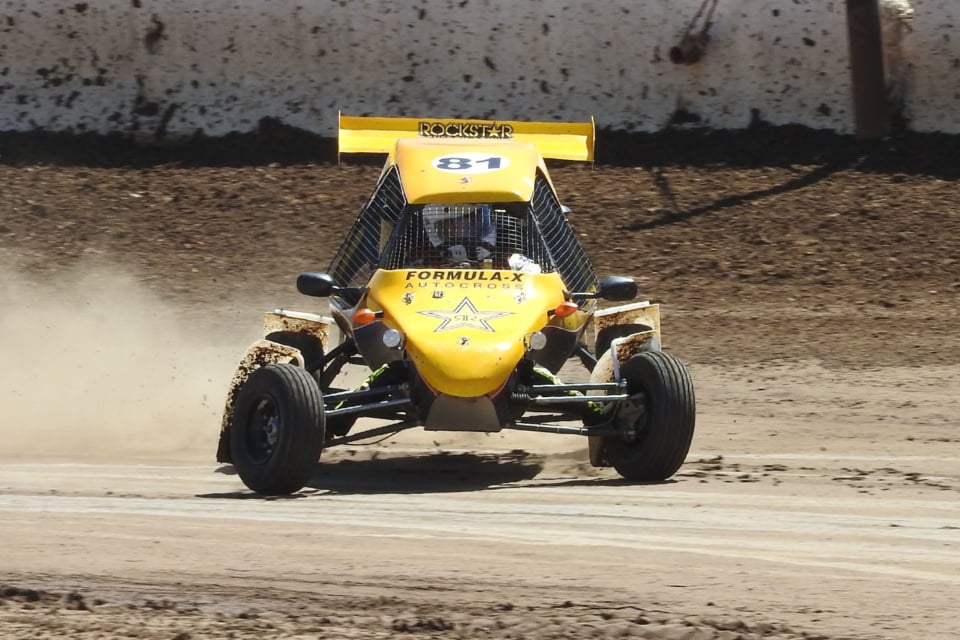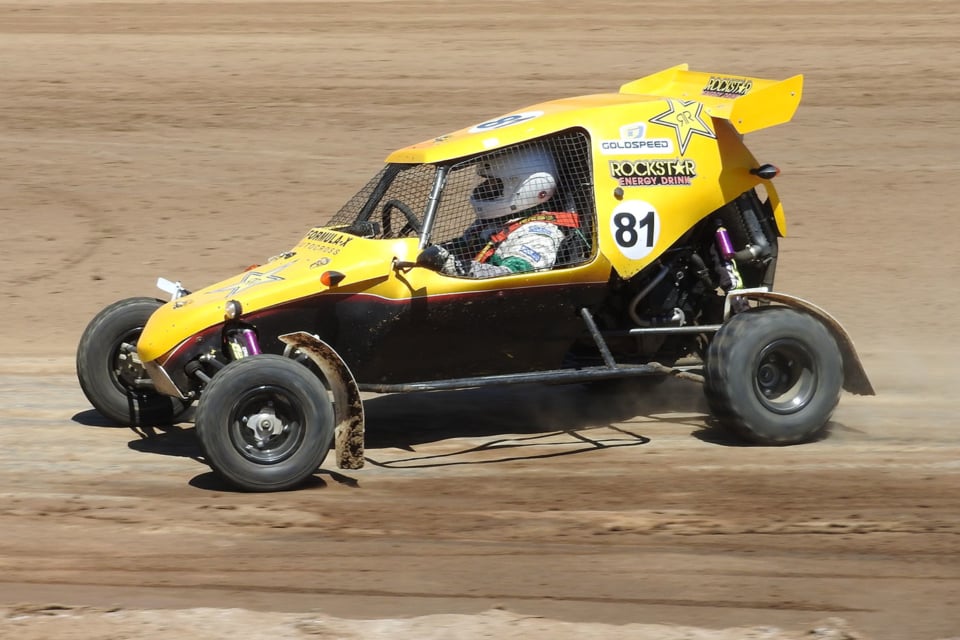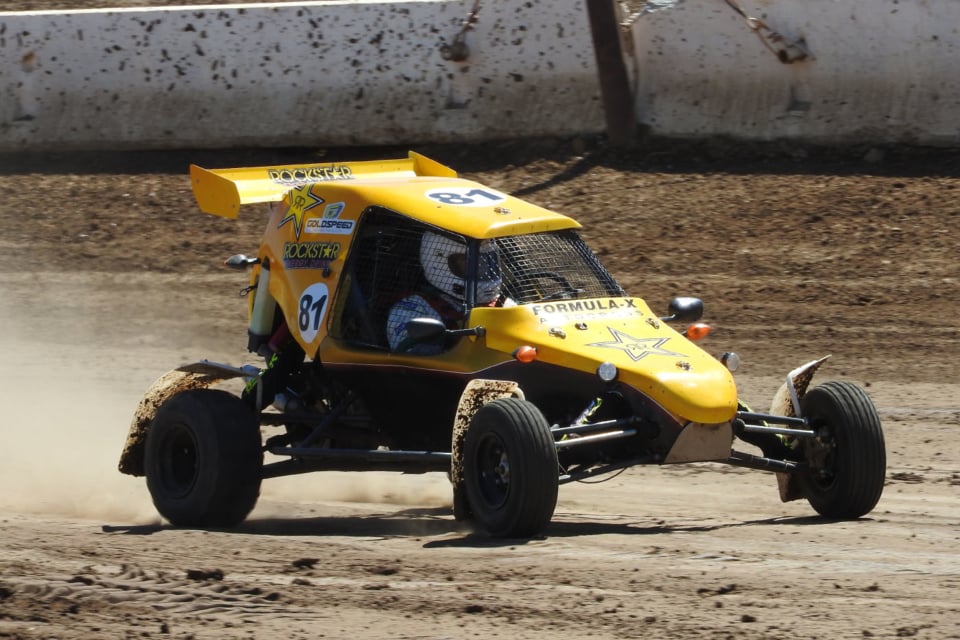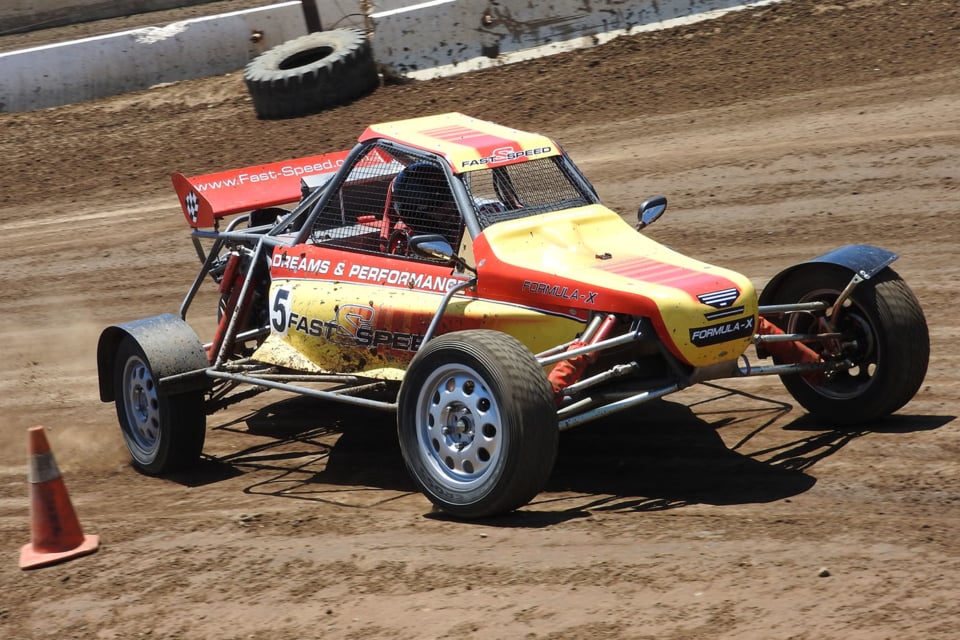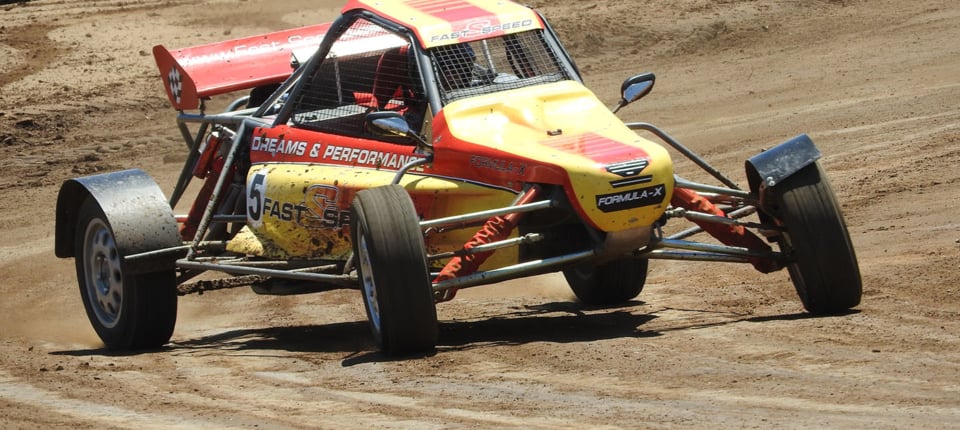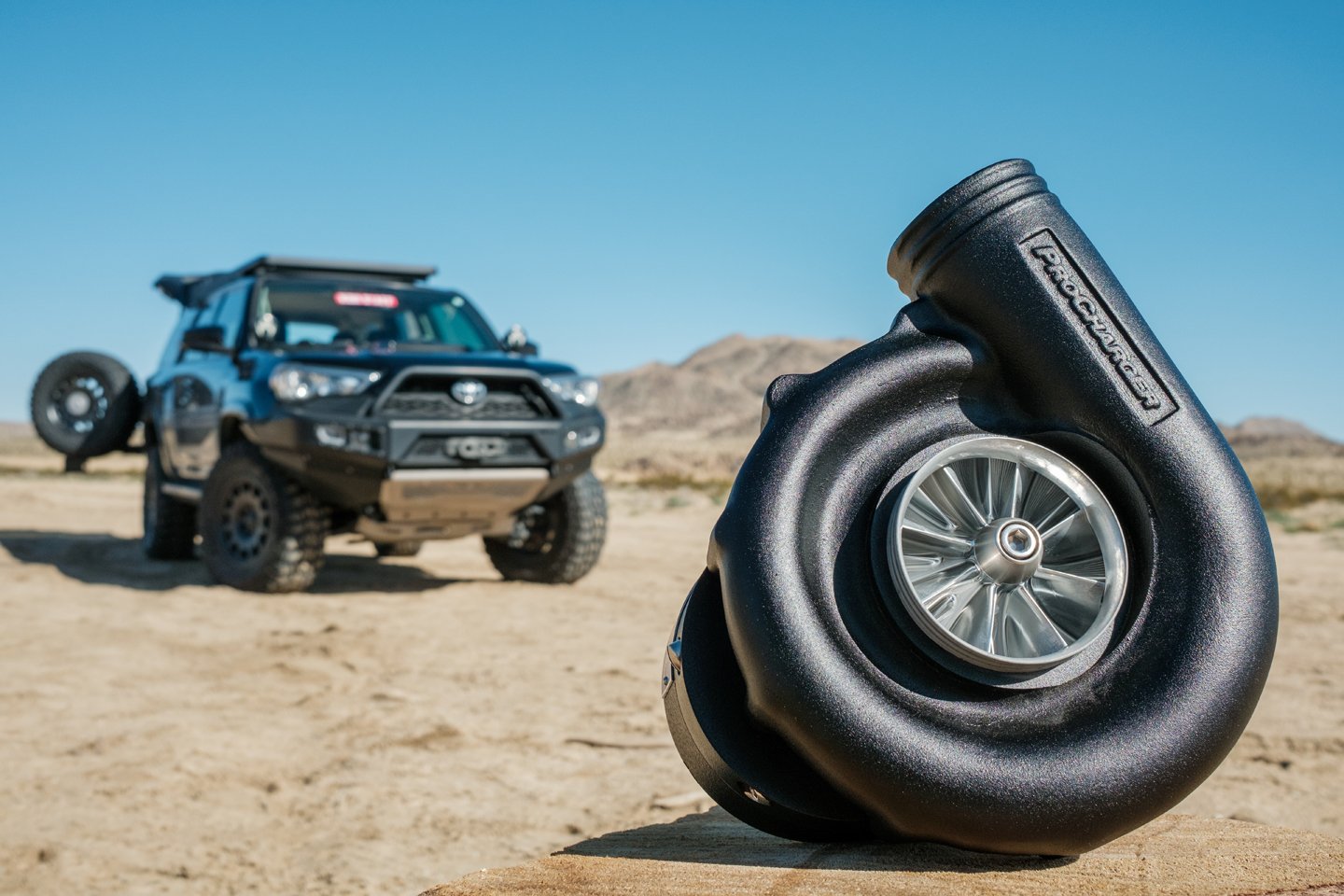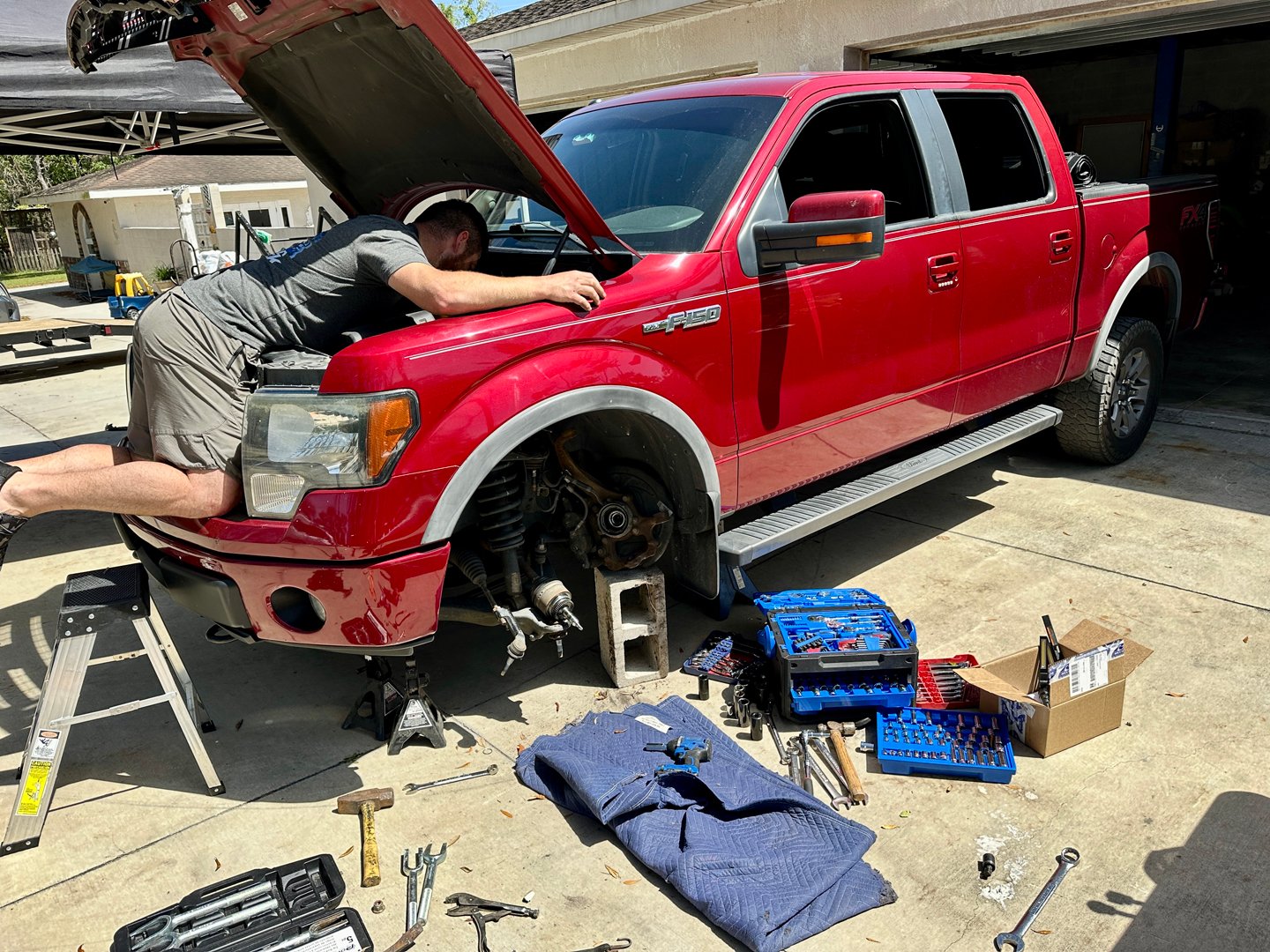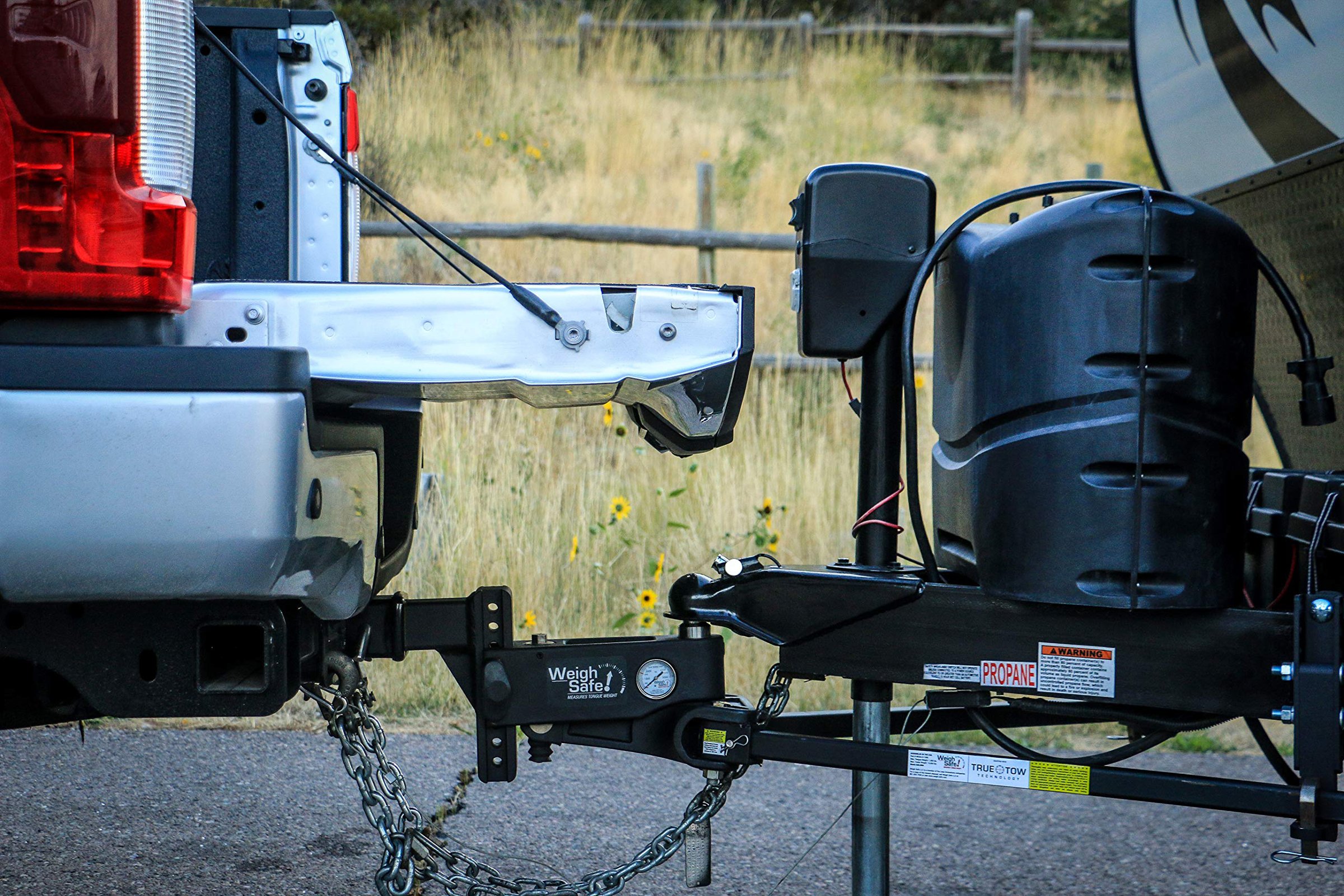To help bring the experience of European autocross to American soil, there’s a new line of independently-suspended, lightweight, and affordable off-road vehicles courtesy of Igor Palagin and his companies, Fast & Speed USA and Formula X Autocross. These focused machines look like formula cars laden with all the accouterments common to an off-road buggy, but with the suspension travel and body language of a Trophy Truck.
The high-revving bike motor mounted midship, the lightweight Chromoly chassis, a short track, and plenty of suspension travel give these Crosskart a character of all its own. The dimensions are more Formula car than buggy and standing over the diminutive machine, you have to wonder how anyone larger than a jockey manages to climb inside the cramped cabin. Yet, it’s much roomier than the external shot suggests.
The Kart
The ambiance is all business. A spartan interior is decorated with a few bold gauges, a fixed-back seat, an ignition switch, a few indicators for oil pressure and the like, and a prominent shift lever to man the sequential gearbox. In fact, the interior is reminiscent of a Trophy Truck, albeit one shrunk to a quarter of its original size.
The jungle gym of tubing allows for a medium-sized man to sit comfortably behind the wheel. Elbows are swept alongside the body, much like the posture inside a Formula car, though the driver sits upright, surrounded by wire mesh.
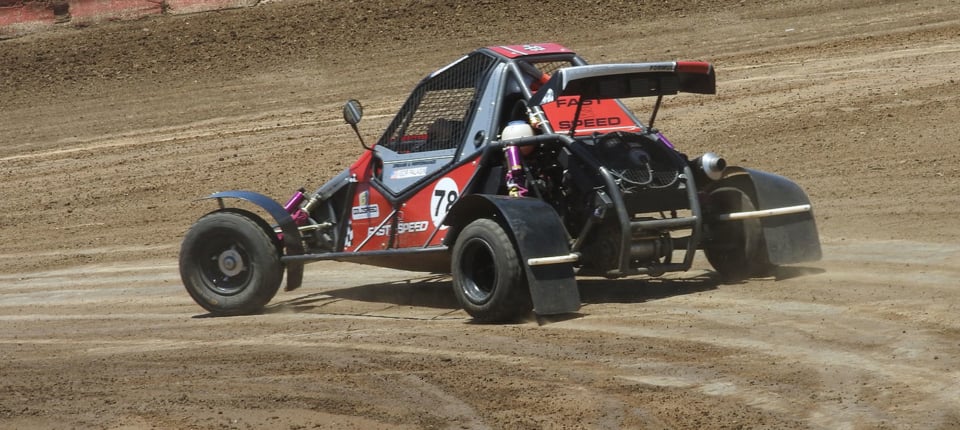
Without an LSD to aid rotation, the driver needs to be assertive and shift the weight to facilitate turn-in. Photo credit: fxautocross.com
Its bulldoggish stance helps it look impressive even while stationary, and at speed, the dive and roll of the Crosskart give it the body language of a Trophy Truck, but with faster transitions and a definite light-footedness of a machine weighing 660 pounds plus driver. Upon turnover, the wonderful blat-blat accompanies a forceful vibration shaking the featherweight frame.
The snarl of the motor is relentless and only punctuated by clicks of the sequential gearbox. Provided the driver keeps the engine within its peak powerband that spans roughly 4,000 revs, the driven wheels will continue to spin, and that means there is rarely a moment of silence when this machine is running—especially since it loves to rotate under throttle.
Different Types Of Crosskarts
There are two options for the Crosskart’s powerplant. The 600 cc motor, sourced from a Honda CBR 600, screams to 11,000 rpm and makes 140 horsepower comfortably. Alternatively, the Suzuki GSX-R 750’s motor can provide the propulsion, and while this makes a similar amount of top-end power, it generates more low-end torque and revs to just 10,000 rpm.
The weight difference between the two engines is negligible, and the advantage of the 750 cc engine is seen in acceleration uphill. As there’s still lots of testing to do with this platform, the difference the two engines are still largely unknown and seemingly depending on driving style; whether the driver prefers to rely on revs or torque to get around the course might determine their engine choice.
The motor sends power via a chain and sprocket to a live rear axle, albeit one with CV joints to allow for the independent articulation of each wheel. Incidentally, most of the braking is done at the rear axle, since the idea is to use the brakes to rotate the kart into the corner, and through the scrub, control the speed of the kart. As there’s no limited-slip differential and no significant Ackerman angle to help the rotation, the driver needs to have command of weight transfer to make the kart work. With the right axle loaded at the right moment, the Crosskart is as agile as anything—but get it wrong, and the machine quickly becomes a recalcitrant handful.
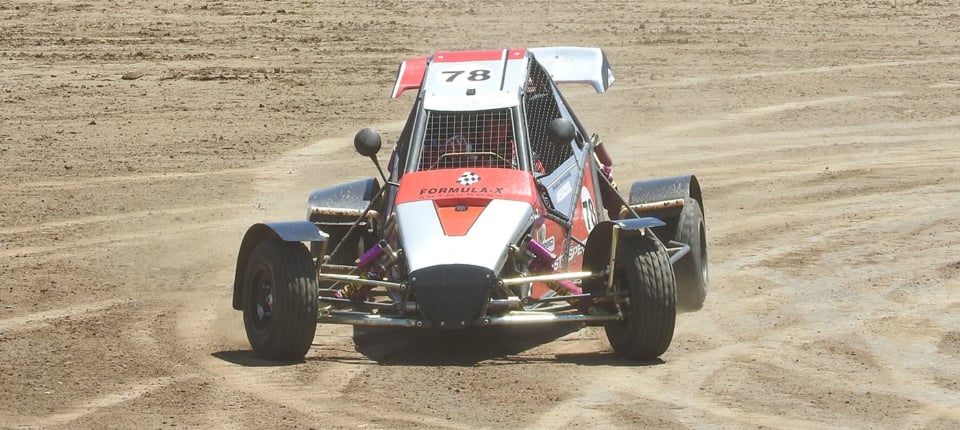
Though demanding and unforgiving, treat it right, and the Crosskart dances like a ballerina. Photo credit: fxautocross.com
Carry the brake a little too long into the corner, or fail to coordinate the steering inputs properly, and the rear swings around violently. For this reason, the Crosskart is constantly rotating around its central axis—a theme I explored while rallycrossing a Subaru WRX a while back—but now, with the dimensions and weight distribution as they are, the Crosskart’s breakaway is abrupt and requires a trained hand. As a result, the driver becomes completely comfortable with constant countersteering.
With momentum aiding rotating at speed, the Crosskart exhibits a strong, natural, progressive oversteer through the fastest corners that is made manageable by the generous amount of suspension travel. Steering corrections are regular and rapid, but the setup allows for acrobatic changes in angle at any speed. Yet, it’s surprisingly compliant over bumps—the expensive Reiger Racing Suspension does its job well.
The shocks are one of the standout features of the Crosskart. Reiger Racing, a Dutch outfit with decades of experience in European Autocross and Rallycross, has agreed to work with Palagin and design a shock specific for his machines, as well as provide support for a growing field.
Without much in the way of bodywork—fenders specifically—drivers are urged to avoid contact. Bashing, rubbing, and nudging really have no place in this category, like any other open-wheeled racing category, and so drivers must refine the racecraft to quite a high level. If someone can slide sideways at ninety miles an hour with an opponent doing the same just inches from them, they can race at just about any level.
Palagin’s Buggy
Palagin has designed this machine to be reasonably-priced for a spec-racing machine. The cost of a 600-cc Crosskart totals around $35,000, and thanks to a majority of American parts used in Palagin’s creation, the maintenance costs are kept quite reasonable. With the exception of the Dutch shocks and the Euro-spec Goldspeed tires, the Crosskart is easily serviced stateside.
What’s more—there’s a variety of vehicles to choose from. If the featherweight Crosskart isn’t a customer’s cup of tea, their Buggy, which is very closely related to the vehicles used in the International Race of Champions, offers more power, a limited-slip differential, considerably more bodywork, and a different driving experience.
These Buggies are heavier—totaling roughly 1,100 pounds plus the weight of the driver—but benefit from a ZX-14’s 1420cc motor and 200 horsepower! The driving experience is quite different, as the Buggy gobbles up straights and will, thanks to the power, transition on-throttle through the high-speed switchbacks so smoothly and so willingly, that the weight isn’t overwhelming. The Buggy is undoubtedly heavier, but by most racecar standards, still a featherweight. Plus, it has the motor to carry it provided it finds a section straight enough to properly stretch its legs.
In addition to providing an interesting, affordable racing vehicle, Palagin aims to establish a strong spec category across the United States. Currently, three locations in California are providing the venues for the upcoming season: Thunderhill Raceway, Perris Auto Speedway, and the Prairie City OHV. With seven races currently on the calendar, and several more scheduled this year, these sites will be home to groups of 10-12 of these angry machines dueling for upwards of twenty-five minutes at a time. That sounds like a spectacle that any stripe of motorsports fan could appreciate.
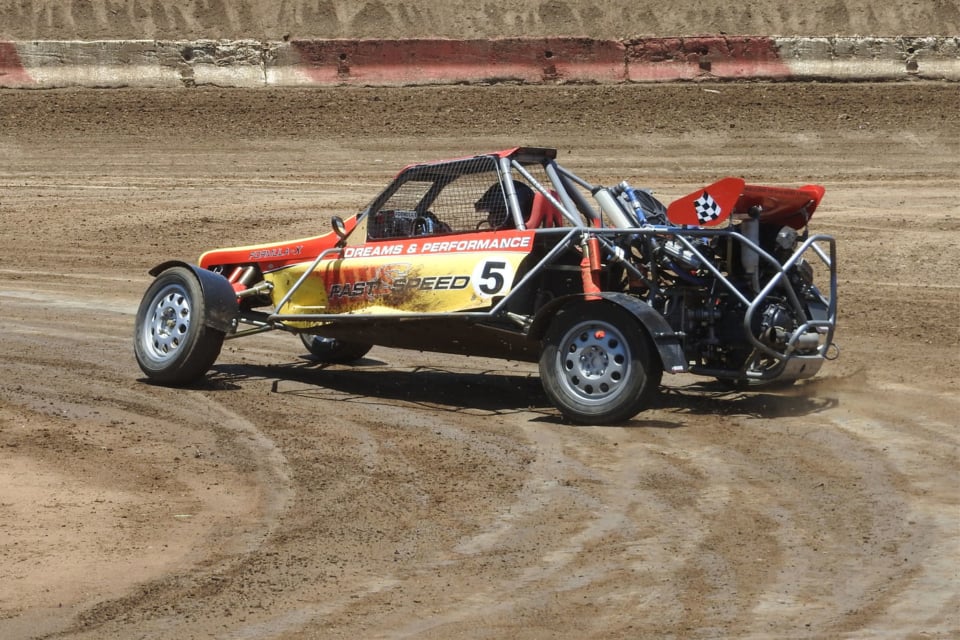
The larger buggy doesn’t rotate as easily but has more than enough power to steer the rear at high speeds.

